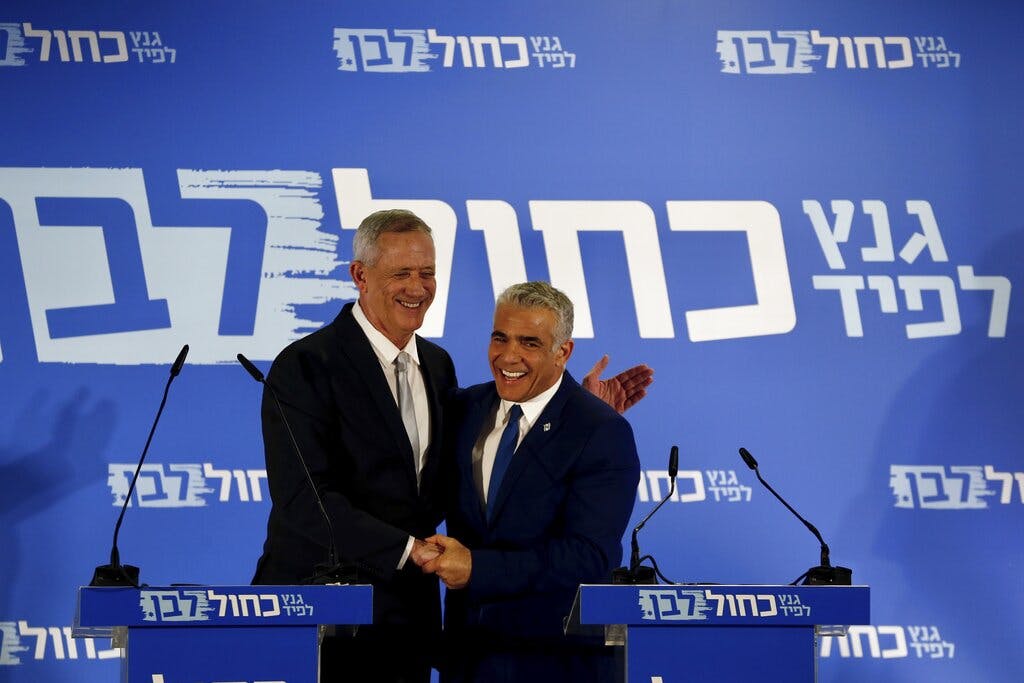The Israeli Left’s Pyrrhic Victory
It contributes to the rise of a conservative alternative to Likud.

On the face of it, six months of anti-government rhetorical carpet-bombing in Israel have been highly effective. The latest polls suggest that, were elections to be held now, the conservative-religious coalition led by Prime Minister Netanyahu would fall to about 52 seats out of 120 at the Knesset. That would be down from the 64 seats it won on the November 1, 2022, ballot, or the 60 or 62 seats it was still projected to keep by the end of January.
Moreover, this reversal looks essentially like a defeat for Likud, Mr. Netanyahu’s own conservative party, which is reckoned likely to fall to only 24 seats from 32 seats it holds now, whereas its allies, four smaller nationalist and religious parties, stay put at 28 or 29 seats instead of 32.
The “civic rebellion” against Mr. Netanyahu was started by the Left (Yair Lapid’s liberal and secularist Yesh Atid party) and the Far Left (Meyrav Mikhaeli’s rump Labor Party and Zehava Gal-On’s quasi-Communist Meretz party) even before his sixth cabinet was sworn it. Mr. Lapid made a statement on December 1 urging elected local officials and Israel Defense Forces reserve personnels “not to cooperate” with the Right. That was four weeks before the cabinet’s formal installation on December 29.
Likewise, the first petition of military reserve personnels warning they would not show up for periodic duty as long the conservative would be in charge was made public on December 26: three days ahead of the cabinet’s installation. And one full month before the bill to reform Israel’s judiciary — which would become the main pretext for spiraling anti-government protests — was submitted to the Knesset.
Clearly, the whole operation was designed from the beginning to derail the first clearcut parliamentary majority Israel was enjoying after a string of four successive hung elections in less than four years. And to bring back Mr. Lapid, who had been briefly in charge in 2021-2022 (along with a renegade conservative, Naftali Bennett), as prime minister.
Beyond personal ambitions and mere politicking, the Israeli Left and Far Left (not to mention their American friends and sponsors), saw it as the last opportunity to halt an inexorable demographic and sociological shift to the Right. No doubt the Left and the Far Left scored a victory. However, it may be a Pyrrhic and short-lived victory. Consider who actually benefits from the Right’s apparent decline.
Mr. Lapid’s Yesh Atid party briefly rose according to some polls from 24 seats in the present Knesset to 27 projected seats – but is now receding to less than 20 seats. The Far Left rose from 4 seats to 5 or 6, with an interesting twist: while Labor was entirely substituted to Meretz in 2022, the opposite may happen in the next election. Avigdor Liberman’s staunchly secularist party Israel Beitenu invariably gets 6 seats. The same about the two main Arab parties, 5 seats each.
The true winner is the Right-of-Center National Unity party, led by a former chief of staff and Defense minister, Benny Gantz, who rose to a projected 29 seats from 12 seats last November. That turns it into the Opposition’s main group, well ahead of Yesh Atid.
What accounts for this meteoric rise? Since the Left, the Far Left, and the Arab parties have not disintegrated, it stands to reason that National Unity is enjoying a substantial transfer from the Right. And that it cannot sustain its present advantage without becoming more pronouncedly conservative.
When and why did National Unity take off ? Until the last days of March, it progressed incrementally, to 18 seats from 12 seats. On March 27, it suddenly made a breakthrough to 23 seats.
At that moment, the protests initiated by Mr. Lapid and his affiliates (or any Svengali behind Mr. Lapid’s throne) were reaching their apex: rallies against the judicial reform were blocking the nation’s major highway, off Tel-Aviv, and Ben Gurion International Airport at Lod; high-tech moguls were taking steps to disinvest from Israel (some of them talking about moving to places like Albania); “pro-democracy” activists were urging foreign countries to pressure Mr. Netanyahu into surrender; insubordination in the reserve forces was spreading; secular activists attempted to march defiantly through ultra-Orthodox neighborhoods.
Was Israel’s hitherto stable and efficient democracy sinking into a “street revolution” akin to the 2011 Arab Spring? Was the Jewish State unraveling, as the ruling theocrats of Iran had been claiming for several years ? One ominous video went viral: Israeli Arabs and Jewish leftwing extremists waving Palestinian flags in the heart of Tel-Aviv. No less disquieting was Moody’s decision to downgrade Israel from Aaa (the highest ratings) to A1 (a five points demotion).
At that point, Benny Gantz distanced himself from the Lapid-led opposition — and from the protests. He offered to conduct a dialogue on the judicial reform. He insisted that protests should not compromise public order, the image of Israel abroad or national security. Even more markedly, he visited prominent ultra-orthodox rabbis.
For those in Likud who were losing faith in Mr. Netanyahu’s political wizardry, and those who, whatever their background, were concerned by a potential disruption of the economy or the army, the former chief-of-staff looked like the only alternative, especially against Mr. Lapid.
What’s next ? Every poll suggests that Mr. Netanyahu is more trusted as a prime minister than Mr. Lapid by a substantial margin (44 percent to 38 percent if they run as the main contenders, according to pollster Camil Fuchs). On the other hand, the same polls suggest that Mr. Gantz would win in a duel with Mr. Netanyahu (45 percent to 37 percent). But how would voters behave in real terms?
Most of the conservative voters who helped Mr. Gantz to emerge over the past weeks would probably desert him if he enters again in a coalition with Mr. Lapid and the Far Left, as he did in the past. Conversely, his core supporters, who granted him 12 seats in 2022, are weary of an alliance with Mr. Netanyahu. The way out might be, ideally, a national emergency government led on equal footing by both Likud and National Unity.
The price for Mr. Netanyahu to pay is to shelve his most cumbersome partner, Itamar Ben-Gvir of the nationalistic Otzma Yehudit party. Whereas for Mr. Gantz, it is to pass a deal with the ultra-orthodox on such vexing issues as military exemption. No doubt both options are currently being discussed.

